Log in or create new account to save this product to your wishlist.
How to Identify, Fight, and Prevent Vine Weevil
The vine weevil is a destructive little pest. Recognise the signs of infestation to prevent the widespread damage this critter can do to your garden plants.
Latest articles
7 MIN 22 Jul How to keep your lawn in shape this summer 9 MIN 15 Jul Watering Your Garden: 10 Top Tips! 11 MIN 15 Jul Is Your Grass Type Right for your Garden? 11 MIN 10 Sep Create Your Low-Maintenance Garden – Tips and Ideas 11 MIN 08 Sep The Ultimate Guide to Choosing the Perfect Hedges for Your Garden 12 MIN 30 Aug The Top 20 Evergreen Climbers to Transform Your GardenThe vine weevil is a widespread plant pest that can wreak havoc on your plants, particularly those in pots or containers. This pest damages plant foliage and can destroy its root systems. You could say this little critter is a particularly unwelcome garden guest that definitely outstays its welcome.
- Identifying the Vine Weevil
- Fighting Vine Weevil
- Preventing Vine Weevil Infestations
- Protecting Specific Plant Types
- Plant aftercare
- How to identify, fight, and prevent vine weevil infestations
- FAQs
So, how do you safeguard your plants from these destructive little critters? And is there a biological approach that prevents the need for nasty chemical pesticides?
In this comprehensive guide, I explore how to identify vine weevils, effective methods to fight them, and preventive measures to protect your plants from future infestations.
Ready? Let’s get started!
Identifying the Vine Weevil
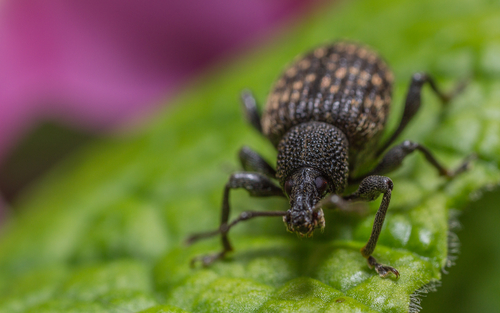
What Does The Vine Weevil Look Like?
These bugs have two distinct life stages: the adult beetle and the larval grub.
Adult vine weevils are dusty grey or black flightless beetles that are nocturnal and grow up to 9mm long. The adult beetles have a broad snout.
The larvae, on the other hand, are creamy-white with brown C-shaped heads. They grow up to 10mm long. They grow from tiny eggs that are round and measure less than 1mm, making them difficult to spot in the soil.
The creature’s lifecycle
Each adult female vine weevil can lay several hundred tiny white eggs beneath the soil between July and October. When the larvae hatch, they live in the root zone while they feed on plant roots. At this stage, they’re around 1mm in length but quickly grow to approximately 12mm.
The larvae are curled into a C-shape and covered with stiff, light brown and white hairs. They’ll survive underground over the winter if there’s a healthy food supply, pupating in spring into white/cream-coloured pupae.
Interestingly, a population of vine weevils is entirely female — they reproduce by parthenogenesis, meaning their embryos develop from an unfertilised egg.
Symptoms of Infestation
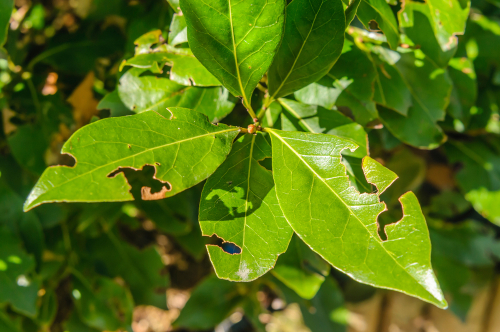
The first sign of a vine weevil problem may be irregularly shaped notches on leaves, particularly on evergreens such as rhododendrons and camellias.
As the infestation progresses, you’re likely to notice plants wilting, collapsing, and eventually dying. Ultimately, this is due to the damage caused by the vine weevil larvae feeding on the roots.
Fighting Vine Weevil
Controlling Adult Weevils
- Hand Removal: Inspect plants at night by torchlight. This is when the beetles are most active. Shake potted plants over a newspaper or tray to dislodge the flightless beetles. Collect the dislodged vine weevils, squash them, and dispose of them.
- Chemical Control: Use a specialist insecticide specifically formulated for vine weevil control. Apply the insecticide at dusk on mild evenings, following the manufacturer’s instructions.
Lawn doctor Louis says:
Never use vine weevil chemical control to treat edible plants.
Controlling Weevil Larvae
- Biological Control: Introduce pathogenic vine weevil nematodes (Steinernema kraussei) to the soil. These parasitic worms are harmless to plants but lethal to vine weevil larvae. For best results, apply nematodes in late summer when the soil temperature is above 5°C and the soil is moist.
- Chemical Control: Drench the compost with a specialist vine weevil insecticide for pots and containers. This will kill the larvae and interrupt the life cycle of the pest.
Preventing Vine Weevil Infestations

Inspect and Quarantine New Plants
Before introducing new plants to your garden or greenhouse, carefully inspect the compost and rootball for any signs of vine weevil grubs.
If you spot any grubs, dispose of the compost, wash the pot, and rinse the plant’s roots thoroughly before replanting.
Dispose of the compost in your green waste bin — don’t add it to your compost heap!
Encourage Natural Predators
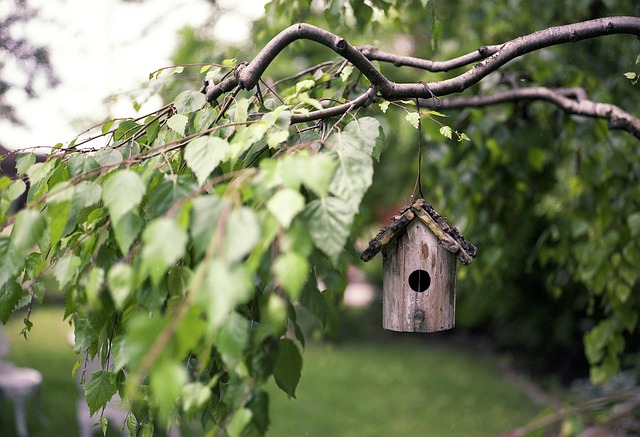
Attract birds, frogs, toads, shrews, and hedgehogs to your garden. These are natural predators of adult vine weevils.
Encourage them with suitable habitats, such as birdhouses, ponds, and sheltered areas.
Create Physical Barriers
Place a barrier, such as parcel tape smeared with non-drying insect glue, around your pots to trap the flightless adult female weevils before they lay their eggs.
This method is most effective outdoors in August and September or year-round in the greenhouse.
Monitor Susceptible Plants
Regularly check your plants that are most favoured by vine weevils, such as:
- Begonias
- Bergenia
- Cyclamen
- Fuchsias
- Heuchera
- Polyanthus
- Primulas
- Sedums
- Strawberries
- Succulents
- Saxifrages
Inspect the plants for signs of vine weevil damage. Take action as soon as you identify the problem. Always act fast!
Protecting Specific Plant Types
Container-Grown Plant
Plants growing in pots and containers are more susceptible to severe damage from vine weevil grubs.
Make sure you inspect your potted plants regularly — and don’t forget to check the compost and rootball. Protect your pots and containers with physical barriers, as mentioned.
Plants in Borders and Beds
Although plants in borders and beds are less likely to be significantly damaged by vine weevil grubs, heavy infestations can still occur.
Keep a close watch on susceptible plants, such as strawberries, Primula, polyanthus, Sedum, Heuchera, and young yew plants, and take prompt action if you notice any signs of infestation.
Edible Plants
Never use the available chemical control methods on edible plants because they’ll damage soft fruits and tender edible leaves.
Instead, focus on prevention: monitoring plant growth and signs of damage and applying biological control methods to protect your edible plants from vine weevil damage.
Plant aftercare
Once you’ve got rid of your vine weevil infestation, you’ll need to replace the compost in your pot. Wash the roots thoroughly in water to remove all traces of soil.
Then, replant your surviving plant into new compost and apply an appropriate fertiliser to help the plant recover from its ordeal.
How to identify, fight, and prevent vine weevil infestations
The vine weevil is a widespread plant pest, causing significant damage to your plants. Implement the prevention methods discussed in this guide and regularly monitor your plants to ensure they remain safe from these destructive pests.
FAQs
Vine weevils are tiny beetles that feed on the roots and foliage of many garden plants. The ground-dwelling larvae cause the most damage — feeding on a wide range of roots, tubers, and even woody plants. A vine weevil population can kill small and large plants.
Adult vine weevils cause noticeable leaf damage, although this is unlikely to cause significant plant damage. However, the larvae live in the soil’s root zone, and they cause substantial harm to entire plants, resulting in wilting foliage and even plant death.
Shake your potted plants over some newspaper, and the weevils will drop out. Squash the weevils and return the plant to its usual position. Alternatively, introduce nematodes — tiny insects that will eat the larvae and interrupt the reproductive cycle of the vine weevils in your garden.
Any questions?
I hope I’ve armed you with all the information you need to attack vine weevil populations that may appear in your garden. But if you have any questions, don’t hesitate to get in touch!
Or check out our comprehensive Help & Advice section of our website — your one-stop shop for all lawn- and garden-related questions!
Thanks for reading!
Leave a comment
Your answer will be displayed on the site and the interested party will be notified by email.
Leave a comment
Have a question or want to share your experience? Leave us a comment.
Read more
The best tips and tricks for a lush green lawn
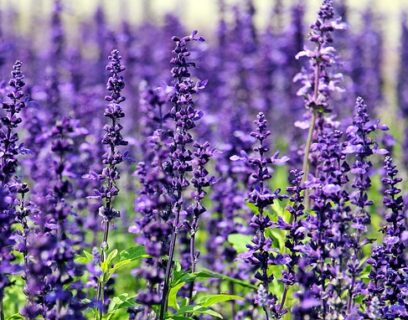 7 MIN
13 Sep
Lavender Cuttings: a step-by-step guide
7 MIN
13 Sep
Lavender Cuttings: a step-by-step guide
 11 MIN
10 Sep
Create Your Low-Maintenance Garden – Tips and Ideas
11 MIN
10 Sep
Create Your Low-Maintenance Garden – Tips and Ideas
 Scarifying Kit
All products after scarifying | Quickly restores the lawn after scarifying | Outsmart weeds quickly with the use of this kit
From: € 39.99
Scarifying Kit
All products after scarifying | Quickly restores the lawn after scarifying | Outsmart weeds quickly with the use of this kit
From: € 39.99
 Spring Lawn Care Kit
MOOWY’s choice for the spring | Quick recovery of your lawn after winter | A strong lawn prevents weeds
From: € 25.99
Spring Lawn Care Kit
MOOWY’s choice for the spring | Quick recovery of your lawn after winter | A strong lawn prevents weeds
From: € 25.99
 Long Lasting Lawn Fertiliser
Effective for 90 days | See results in 14 days! | Suitable for all types of grass and soil
From: € 13.99
Long Lasting Lawn Fertiliser
Effective for 90 days | See results in 14 days! | Suitable for all types of grass and soil
From: € 13.99
Do you want a lawn calendar?
🌱 All important maintenance moments for your lawn during the year. Leave your email and we will send you the lawn calendar for free.
Enter your email
Receive the lawn calendar in the mail
Enjoy a green lawn all year round!




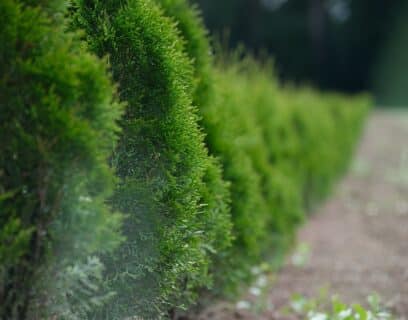






Comments (0)
There are no comments yet. Well then, what are you waiting for to
Be the first to write your comment!inaugurate this pretty page?
Do you have some comments?